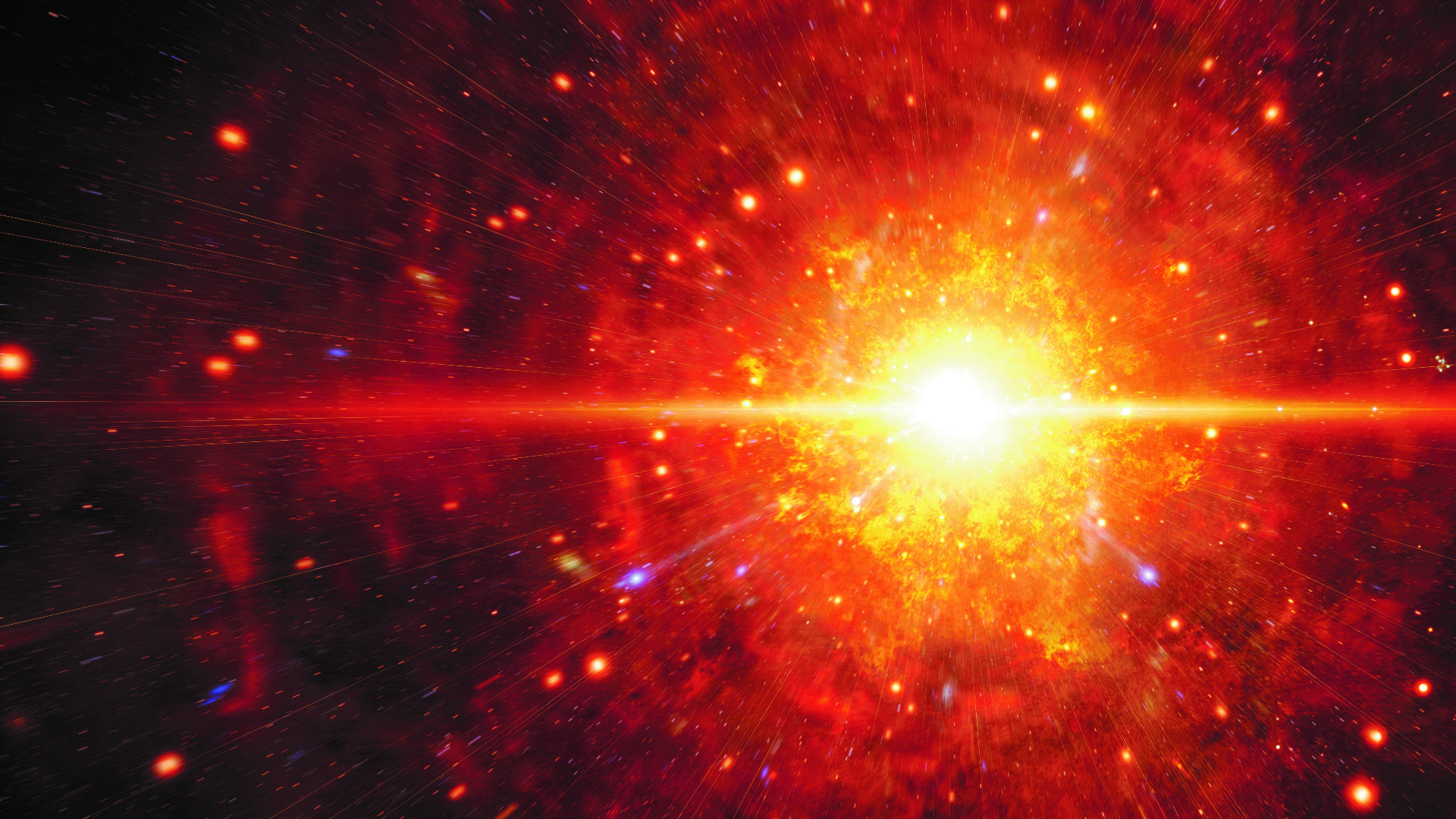Alternatives to the Big Bang Theory (infographic)
Is there another theory for the origin of the universe?

The Big Bang Theory is the primary explanation for how the universe began 13.8 billion years ago. Though it is the leading explanation, some theorists have come up with alternative ideas or extensions to the Big Bang Theory. We explore some of these theories in the detailed infographic below.
To investigate how the universe came into existence, we first need to ask what exactly is it? The term "observable universe" refers to everything that we can see, according to NASA.
Due to the connection between distance and speed of light, scientists can peer at a region of space that light 13.8 billion light-years away meaning we can look 13.8 billion light-years in every direction. But it isn't that simple. Due to the expansion of the universe, recent estimations place the diameter of the observable universe sphere at over 90 billion light-years, according to Forbes.
Related: How big is the universe?

Big Bang Theory assumptions
Scientists make three assumptions about the universe based on theories and observations:
- The laws of physics are universal and don't change with time or location in space.
- The universe is homogenous, or roughly the same in every direction (though not necessarily all of the time).
- Humans do not observe the universe from a privileged location such as its very center.
When applied to Einstein's equations, they indicate that the universe has several properties:
- The universe is expanding.
- The universe emerged from a hot, dense state at some infinite time in the past.
- The lightest elements, hydrogen and helium were created in the first moments.
- A background of microwave radiation fills the entire universe.
Big Bang alternatives
If any of these basic assumptions are wrong, the Big Bang Theory would not explain all the properties of this universe. This leads to some theorists asking "is it possible the Big Bang never happened?"
Related: Was Einstein wrong? The case against space-time theory
One alternative theory is the Steady State universe. An early rival to the Big Bang theory, Steady State posits the continuous creation of matter throughout the universe to explain its apparent expansion, according to NASA Cosmic Times. This type of universe would be infinite, with no beginning or end. However, a mountain of evidence found since the mid-1960s indicates that this theory is not correct.
Another alternative is the Eternal Inflation theory. After the Big Bang, the universe expanded rapidly during a brief period called inflation. The Eternal Inflation theory posits that inflation never stopped, and has been going on for an infinite length of time. Somewhere, even now, new universes are coming into existence in a vast complex called the multiverse. Those many universes could have different physical laws.
The Oscillating model of the universe involved an endless series of Big Bangs, followed by Big Crunches that restarted the cycle, endlessly. The modern cyclic model involves colliding "branes" (a "membrane" within a higher-dimensional volume called the "bulk").
Implications found in quantum gravity and string theory tantalizingly suggest a universe that is, in reality, nothing like how it appears to human observers. It may be a flat hologram projected onto the surface of a sphere, for example. Or it could be a completely digital simulation running on a vast computer.
Additional resources
Listen to ESA"s interview with astrophysicist Professor Joseph Silk on why we may never get to know whether the universe is finite or infinite. Explore the wealth of evidence for the Big Bang with the National Schools' Observatory, Liverpool John Moores University and The University of Western Australia.
Bibliography
- Nicolai, Hermann. "Complexity and the Big Bang." Classical and Quantum Gravity 38.18 (2021): 187001.
- Netchitailo, Vladimir S. "World-Universe Model—Alternative to Big Bang Model." Journal of High Energy Physics, Gravitation and Cosmology 6.01 (2020): 133.
- Wallace, David. The emergent multiverse: Quantum theory according to the Everett interpretation. Oxford University Press, 2012.
- Linde, Andrei. "A brief history of the multiverse." Reports on Progress in Physics 80.2 (2017): 022001.
- Bostrom, Nick. "Are we living in a computer simulation?." The philosophical quarterly 53.211 (2003): 243-255.
Join our Space Forums to keep talking space on the latest missions, night sky and more! And if you have a news tip, correction or comment, let us know at: community@space.com.
Get the Space.com Newsletter
Breaking space news, the latest updates on rocket launches, skywatching events and more!

Karl's association with Space.com goes back to 2000, when he was hired to produce interactive Flash graphics. From 2010 to 2016, Karl worked as an infographics specialist across all editorial properties of Purch (formerly known as TechMediaNetwork). Before joining Space.com, Karl spent 11 years at the New York headquarters of The Associated Press, creating news graphics for use around the world in newspapers and on the web. He has a degree in graphic design from Louisiana State University and now works as a freelance graphic designer in New York City.
- Daisy DobrijevicReference Editor










